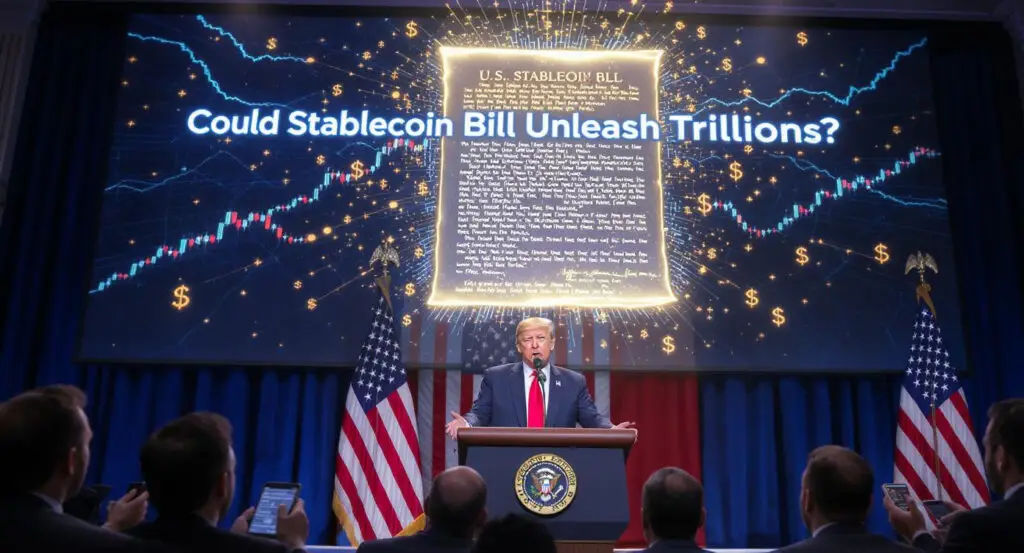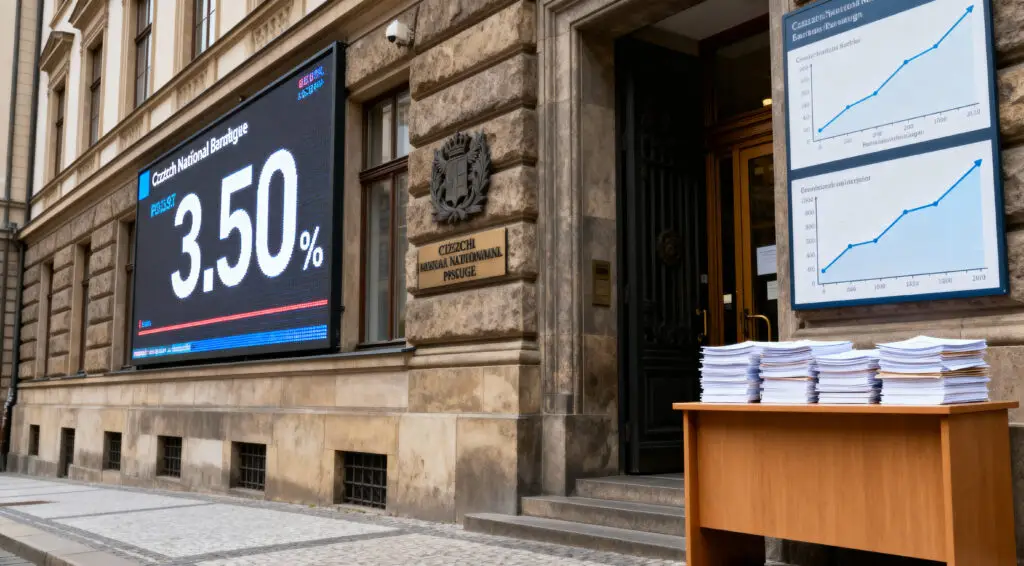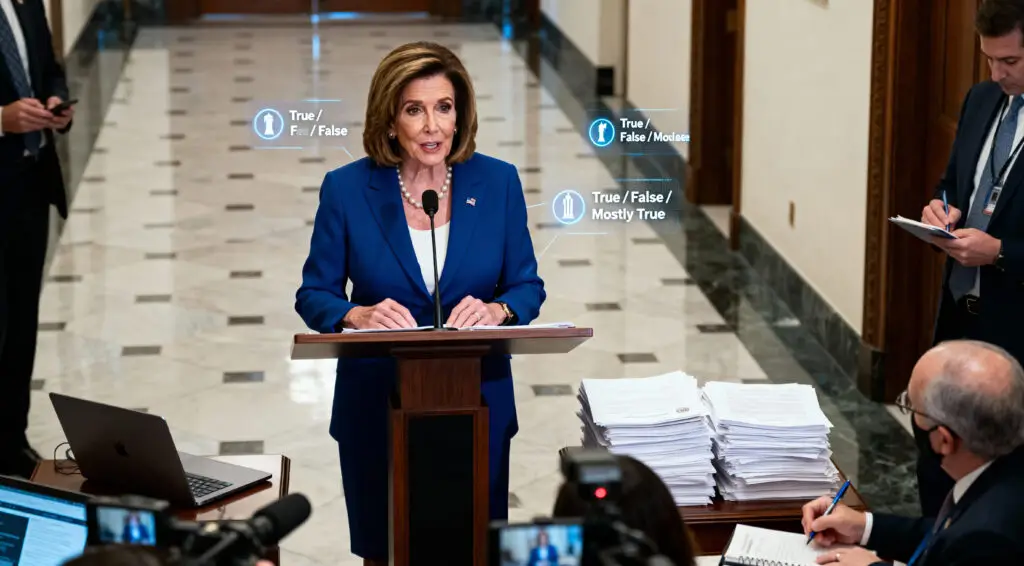Donald Trump is increasingly vocal about his support for the cryptocurrency market, building on a series of recent public endorsements. The former president is now specifically praising a stablecoin bill currently in the Senate, suggesting it could be a pivotal moment that injects trillions in new investment into the digital asset space. These comments gain significant traction as Bitcoin continues to trade above $110,000, coinciding with a sustained surge in mainstream interest in cryptocurrencies. This evolving stance from a prominent political figure marks a notable shift in the broader narrative surrounding digital assets.
Stablecoin Clarity to Unlock Billions
The legislative proposal at the heart of Trump’s optimism is known as the GENIUS Act, which aims to establish clear regulatory guidelines for stablecoins. These digital tokens are pegged to traditional currencies like the U.S. dollar, examples being USDT and USDC. Trump believes that clarifying these rules could unlock vast amounts of capital that institutions have held back, as a lack of regulation has historically been a significant barrier to their participation. Clear guidelines, particularly concerning reserve backing and transparency, are anticipated to finally encourage cautious institutional money to flow into the crypto market.
Bitcoin’s Price Momentum Explained
Bitcoin’s remarkable recent price surge, notably exceeding $110,000, is far from accidental and appears to be a confluence of several influential factors. This momentum has been fueled by robust institutional ETF flows, a growing enthusiasm surrounding staking, and a series of impactful policy headlines. Donald Trump’s increasingly vocal support has added considerable impetus, particularly resonating with retail investors who perceive him as a crucial political ally for the cryptocurrency movement. Consequently, some market analysts are now recalibrating their models, envisioning Bitcoin’s future not as a speculative gamble, but as a credible and enduring long-term hedge against economic uncertainties.
Payments Giants Already Building
The shift towards digital assets is not merely theoretical; major payment industry players are actively building infrastructure to support it. Companies like Visa, Stripe, and PayPal have been engaged for months in exploring and developing tokenized payment solutions, demonstrating a tangible commitment to integrating digital currencies into mainstream transactions. On the institutional investment front, prominent firms such as BlackRock and Fidelity are already rolling out a diverse range of crypto-linked investment products, signaling a significant move towards broader adoption. Trump’s latest pronouncements, including his suggestion of a national Bitcoin reserve, send an unequivocal message: he is keen for the U.S. to lead, rather than trail, in the global digital asset race.
Not Everyone Is Convinced
Despite the growing enthusiasm, the proposed stablecoin legislation and the broader crypto surge face considerable skepticism and pushback from various quarters. Legal experts have raised pertinent warnings that stablecoins remain susceptible to inherent risks, particularly those stemming from inadequate collateralization, governance deficiencies, and underlying technological gaps. Critics further contend that even a meticulously crafted bill like the GENIUS Act might not entirely insulate the market from potential stablecoin failures or broader instability. Moreover, some observers view Trump’s supportive comments as primarily driven by campaigning motivations rather than deep policy convictions, advising caution regarding the actual impact such legislation might ultimately yield.
Trump’s Role in Shaping the Narrative
Donald Trump’s recent statements regarding cryptocurrency have been notably specific and prescriptive, diverging from more general political rhetoric. He has openly advocated for crypto-friendly tax breaks, called for robust federal protections for digital assets, and even hinted at the possibility of granting stablecoins legal status as cash equivalents. This distinctive and supportive rhetoric has played a significant role in bolstering confidence among cryptocurrency advocates, who now perceive a powerful ally for their cause in Washington. However, the ultimate determination of whether this momentum translates into lasting legislative changes remains contingent on the upcoming actions within Congress.
What to Watch from Here
The immediate focus for the stablecoin bill now shifts to the House, which is anticipated to review the legislation before August. Should the bill successfully pass through Congress, it could usher in a transformative era for companies like Circle and Tether, compelling them to adhere to stringent new reserve rules designed to enhance transparency and stability. However, the more significant prize, and a key long-term outcome, could be the full-scale entry of traditional banks and asset managers into the cryptocurrency markets, a development that would profoundly reshape the financial landscape.
A Potential Bitcoin Reserve
Beyond the stablecoin bill, Trump has also floated the intriguing concept of establishing a U.S. Bitcoin reserve, a proposal that carries immense implications. If this idea gains traction and moves beyond mere headlines to become a tangible policy consideration, it possesses the potential to dramatically reshape how other nations approach the integration of cryptocurrencies into their sovereign portfolios. Such a move by a major global power like the U.S. could normalize and legitimize digital assets on an unprecedented scale, influencing international financial strategies for years to come.
What Does This Mean?
Donald Trump’s enthusiastic backing of the stablecoin bill holds the potential to be a defining moment if the current momentum in the cryptocurrency space continues to build. Regulatory frameworks, once merely a speculative concept, are now at the forefront of policy discussions. Should these rules be implemented effectively, Bitcoin and other digital assets could transition from volatile, risky side bets to fundamental, core holdings for major institutions. The determination of whether this marks the genesis of a trillion-dollar market surge or simply another phase of political rhetoric ultimately rests upon the legislative actions taken by Washington in the coming months.























